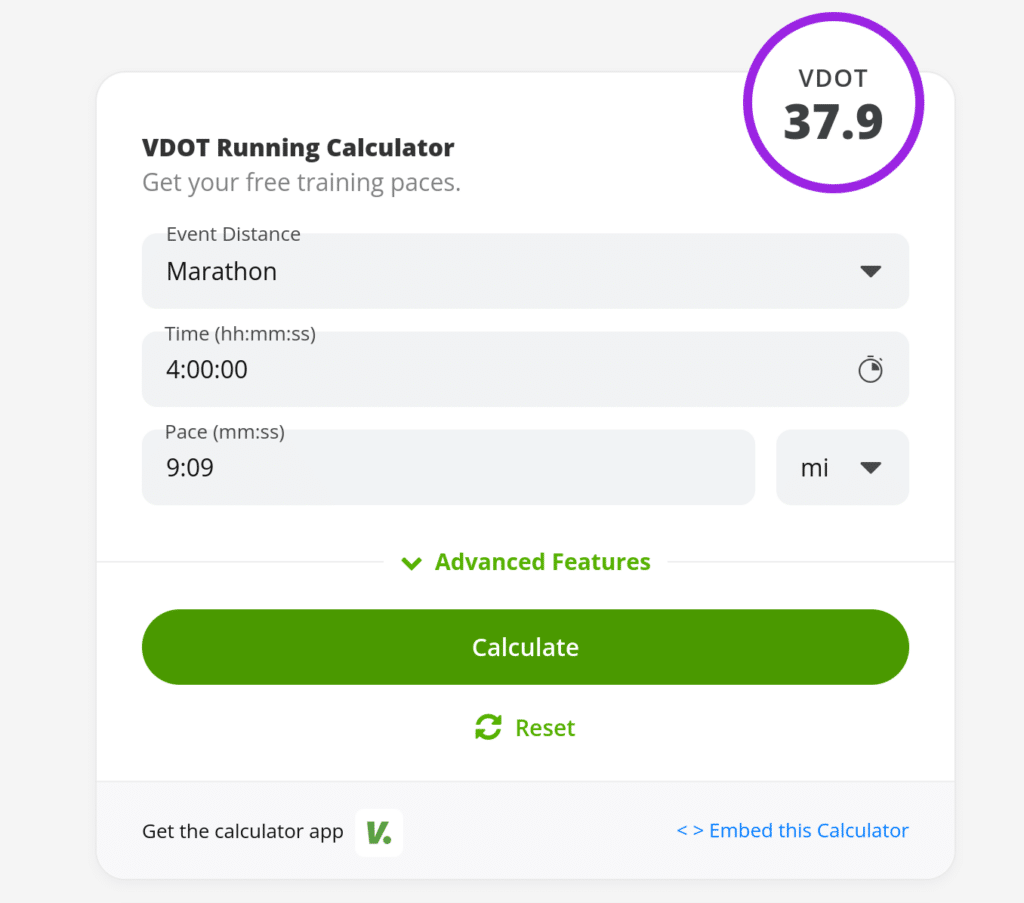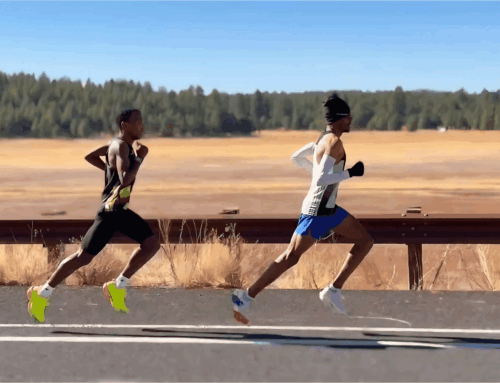The VDOT Calculator (embedded below) acts as a running pace calculator in three keys ways to help runners of all levels improve:
- Race Pace Calculator: get race paces to help with race preparation or analysis of a performance
- Training Pace Calculator: get personalized training paces to train more effectively
- Equivalent Race Pace Calculator: get equivalent race performances to help set goals or compare which performance is better
Race Pace Calculator
Enter a race result or expected performance to get a breakdown of race paces for that distance and time. This is a great tool to help plan for a future race or get some data on how you paced in your race. Using this feature as a marathon pace calculator is one of the most common use cases.
Training Pace Calculator
The most commonly used feature of our pace calculator is the Training tab where you learn your proper training paces based on a recent or estimated race performance. The key then is learning what each pace type means and what physiological function you improve while running at that pace. For instance, spending time training at your Threshold pace improves your endurance. Want to learn what your Threshold pace is? Enter a recent or estimated race time (ideally a race that lasts at least 10-12 mins), click calculate then navigate to the Training tab. You’ll find your Threshold pace broken down per mi, km, 1200m, 800m or for 600m for added convenience.
Learn more about the purpose of each training pace type here. Additionally, while using our coaching app V.O2 you are also able to track the balance of time spent at each pace to help learn your pacing needs.
Equivalent Race Paces
After calculating a race pace click to the Equivalent tab to learn the equivalent performances at other distances. Let’s say you wanted to learn what your half marathon pace would be after running a 10k in 45:00 (7:15/mi) or a 5k in 21:43 (6:59/mi). According to the calculator 7:37/mi for a half marathon would be the equivalent effort.
Remember, these are not predictions (they could be used to set reasonable goals), but rather the physiological equivalent performances. For instance, a 5:38 mile is the same level of performance as a 40:00 10k. Individuals might be stronger in one event or another for various reasons. Two reasons in this case: lower training volume and/or a greater focus on Repetition training which improves speed and economy.
To gain more insight on how to train more effectively based on your running history and goals schedule a consult with a certified coach on the VDOT Marketplace.






Leave A Comment